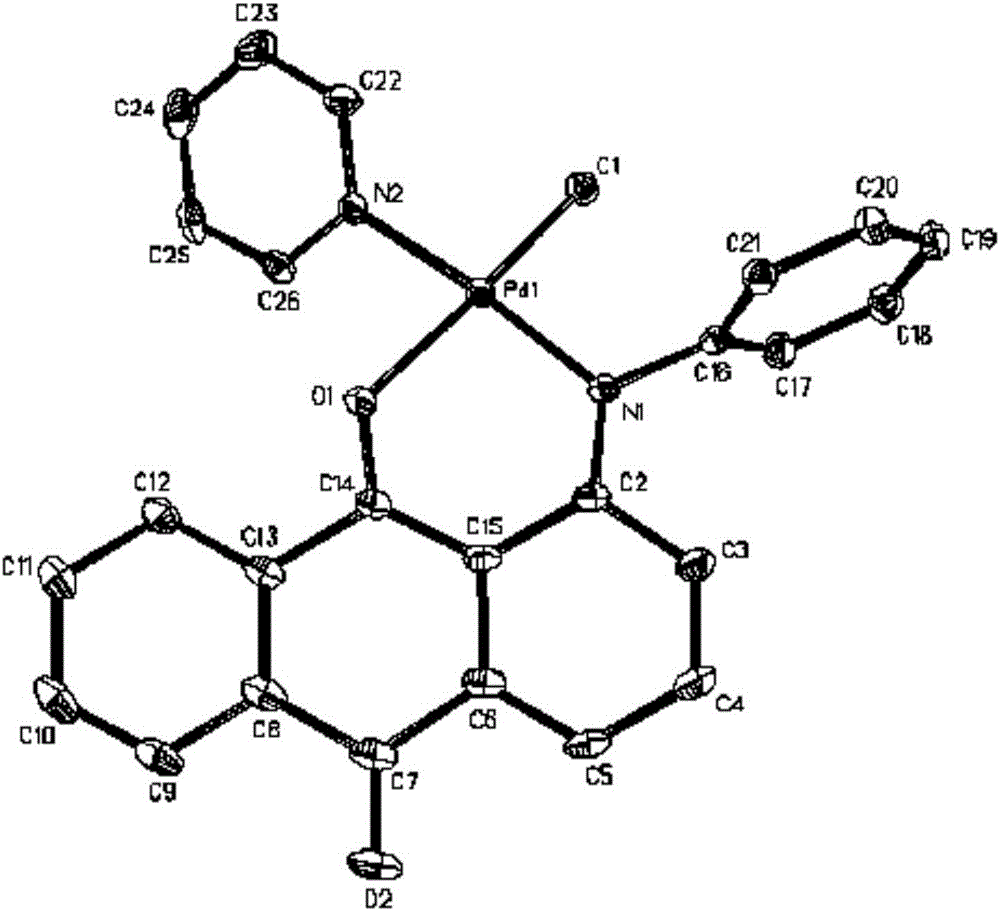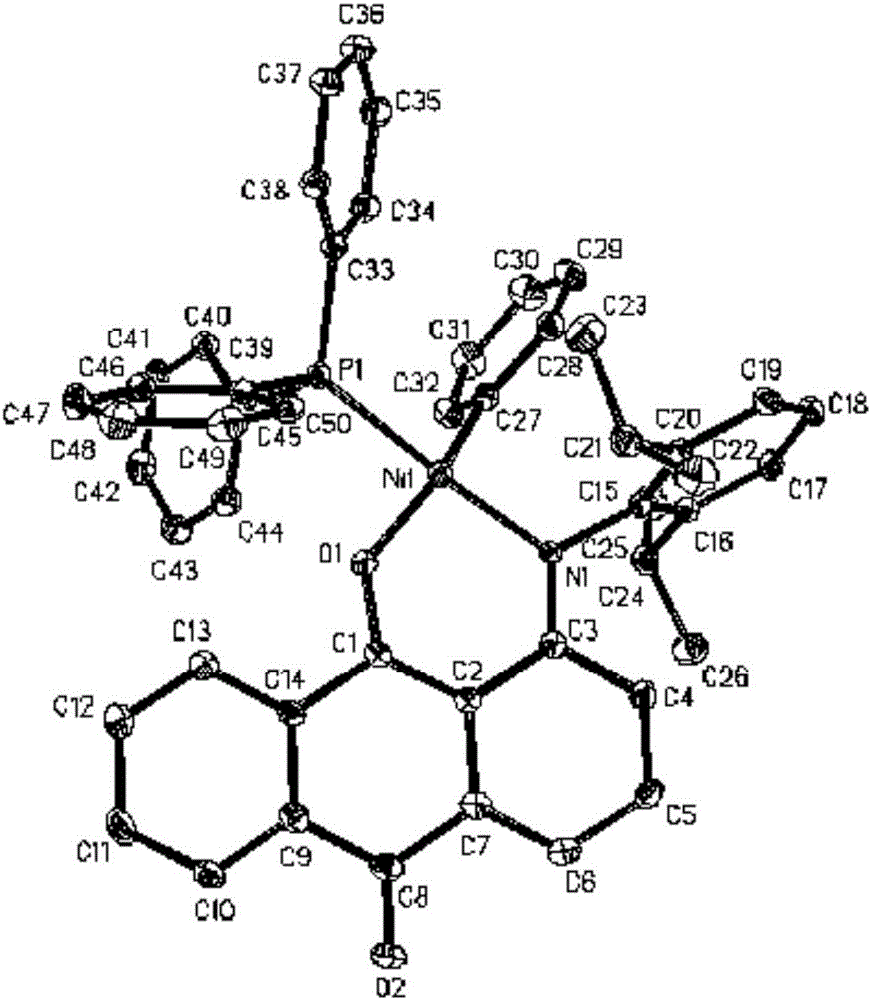Aniline anthraquinone late transition metal compound and preparation method and application thereof
A transition metal, aniline anthracene technology, applied in the field of olefin catalysis, can solve the problems of not too high activity, no research on the polymerization ability of polar monomers, and low polymerization activity.
- Summary
- Abstract
- Description
- Claims
- Application Information
AI Technical Summary
Problems solved by technology
Method used
Image
Examples
Embodiment 1
[0069] A preparation method of aniline anthraquinone transition metal complexes, comprising the following steps:
[0070] (1) Dissolving 1-chloroanthraquinone and aniline with a molar ratio of 1:1.5 in toluene, and then adding the catalytic system, the catalytic system is bis(dibenzylideneacetone) palladium, large hindered phosphinodicene Iron and Cs 2 CO 3 , wherein, bis (dibenzylidene acetone) palladium is 2% of 1-chloroanthraquinone, the mol ratio of bis (dibenzylidene acetone) palladium and large sterically hindered phosphinoferrocene is 1:1.2, Cs 2 CO 3 The molar ratio with 1-chloroanthraquinone is 1:1. Under the action of catalysis, reflux at 90°C under nitrogen for 36 hours, cool to room temperature, vacuum-dry the solvent toluene to retain the solid, and dissolve the remaining solid in dichloromethane , washed 5 times with water, separated the organic phase with a separatory funnel, added an excess of anhydrous magnesium sulfate to dry, filtered and retained the fil...
Embodiment 2
[0078] A preparation method of aniline anthraquinone transition metal complexes, comprising the following steps:
[0079] (1) Dissolve 1-chloroanthraquinone and 2,6-diisopropylaniline with a molar ratio of 1:1.8 in 1,4-dioxane, and then add the catalytic system, which is bis( Dibenzylideneacetone) palladium, bulky phosphinoferrocene and Cs 2 CO 3 , wherein, bis (dibenzylidene acetone) palladium is 4% of 1-chloroanthraquinone, the mol ratio of bis (dibenzylidene acetone) palladium and bulky hindered phosphinoferrocene is 1:1.5, Cs 2 CO 3The molar ratio of 1-chloroanthraquinone to 1-chloroanthraquinone is 1.5:1, under catalytic action, reflux at 110°C under nitrogen for 36 hours, cool to room temperature, vacuum-dry the solvent 1,4-dioxane to retain the solid, and the remaining The solid was dissolved in dichloromethane, washed 5 times with water, the organic phase was separated by a separatory funnel, dried by adding excess anhydrous magnesium sulfate, the filtrate was retai...
Embodiment 3
[0087] A preparation method of aniline anthraquinone transition metal complexes, comprising the following steps:
[0088] (1) Dissolving 1-chloroanthraquinone and 2,6-dimethoxyaniline with a molar ratio of 1:0.8 in 1,4-dioxane, and then adding the catalytic system, the catalytic system is bis( The molar ratio of dibenzylideneacetone) palladium, large sterically hindered phosphinoferrocene and phosphinophosphinoferrocene is 1:2, Cs 2 CO 3 The molar ratio of 1-chloroanthraquinone and 1-chloroanthraquinone is 2:1. Under the action of catalysis, reflux at 130°C under nitrogen for 12 hours, cool to room temperature, vacuum-dry the solvent 1,4-dioxane to retain the solid, and the remaining The solid was dissolved in dichloromethane, washed 5 times with water, the organic phase was separated by a separatory funnel, dried by adding excess anhydrous magnesium sulfate, the filtrate was retained by filtration, the dichloromethane solvent was concentrated in vacuo, and then n-hexane was ...
PUM
| Property | Measurement | Unit |
|---|---|---|
| Concentration | aaaaa | aaaaa |
| Glass transition temperature | aaaaa | aaaaa |
Abstract
Description
Claims
Application Information
 Login to View More
Login to View More - R&D
- Intellectual Property
- Life Sciences
- Materials
- Tech Scout
- Unparalleled Data Quality
- Higher Quality Content
- 60% Fewer Hallucinations
Browse by: Latest US Patents, China's latest patents, Technical Efficacy Thesaurus, Application Domain, Technology Topic, Popular Technical Reports.
© 2025 PatSnap. All rights reserved.Legal|Privacy policy|Modern Slavery Act Transparency Statement|Sitemap|About US| Contact US: help@patsnap.com



